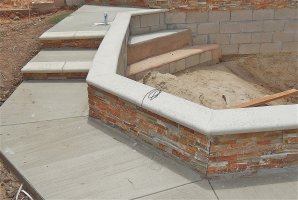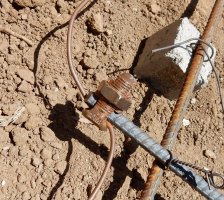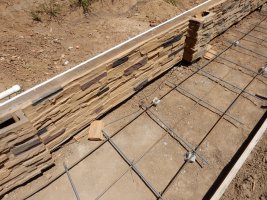north star
MODERATOR
- Joined
- Oct 19, 2009
- Messages
- 4,596
& * & * & * &
The topic of bonding the swimming pools keeps coming up for discussion in
this AHJ.
What we have typically been doing / requiring, on the In-Ground type of
Residential swimming pools, is to have a continuous #8 bare, copper
conductor attached to the swimming pool patio area, around the entire
perimeter of the pool, ...and attaching it to the various metal
components in & around the pool itself [ i.e. - any ladders, diving boards,
etc. ], as per Section E4104 of the `06 IRC.
Conundrum #1:
While attending some training classes, the instructor has always
taught that the #8 conductor should be routed back to the electrical
panelboard and terminated inside of it, ...similar to the bonding
requirements of gas piping.......According to code, where is the
bonding conductor "required" to be terminated? [ code section please ]
Conundrum #2:
In performing some reading / research on this topic, some other
forum members / guests have said that using the welded wire mesh /
welded wire fabric should NOT be useld as a means of "reinforcement"
in the swimming pool deck area, because the wwm / wwf ends up at
various locations in side the concrete placement area, and could / will
erode the #8 bonding conductor, ...thereby negating the perimeter
bonding grid.
Does the code actually specify the use of steel reinforcement bars,
that are actually fully supported from underneath, so as to prevent
sagging / displacement of the equipotential bonding grid?......IME [ in
my experience ], wwm / wwf in these type applications, by itself has
never been installed correctly.....Again, please cite the applicable
code section.
Ya'lls input is requested and GREATLY appreciated!
& * & * & * &
The topic of bonding the swimming pools keeps coming up for discussion in
this AHJ.
What we have typically been doing / requiring, on the In-Ground type of
Residential swimming pools, is to have a continuous #8 bare, copper
conductor attached to the swimming pool patio area, around the entire
perimeter of the pool, ...and attaching it to the various metal
components in & around the pool itself [ i.e. - any ladders, diving boards,
etc. ], as per Section E4104 of the `06 IRC.
Conundrum #1:
While attending some training classes, the instructor has always
taught that the #8 conductor should be routed back to the electrical
panelboard and terminated inside of it, ...similar to the bonding
requirements of gas piping.......According to code, where is the
bonding conductor "required" to be terminated? [ code section please ]
Conundrum #2:
In performing some reading / research on this topic, some other
forum members / guests have said that using the welded wire mesh /
welded wire fabric should NOT be useld as a means of "reinforcement"
in the swimming pool deck area, because the wwm / wwf ends up at
various locations in side the concrete placement area, and could / will
erode the #8 bonding conductor, ...thereby negating the perimeter
bonding grid.
Does the code actually specify the use of steel reinforcement bars,
that are actually fully supported from underneath, so as to prevent
sagging / displacement of the equipotential bonding grid?......IME [ in
my experience ], wwm / wwf in these type applications, by itself has
never been installed correctly.....Again, please cite the applicable
code section.
Ya'lls input is requested and GREATLY appreciated!
& * & * & * &




